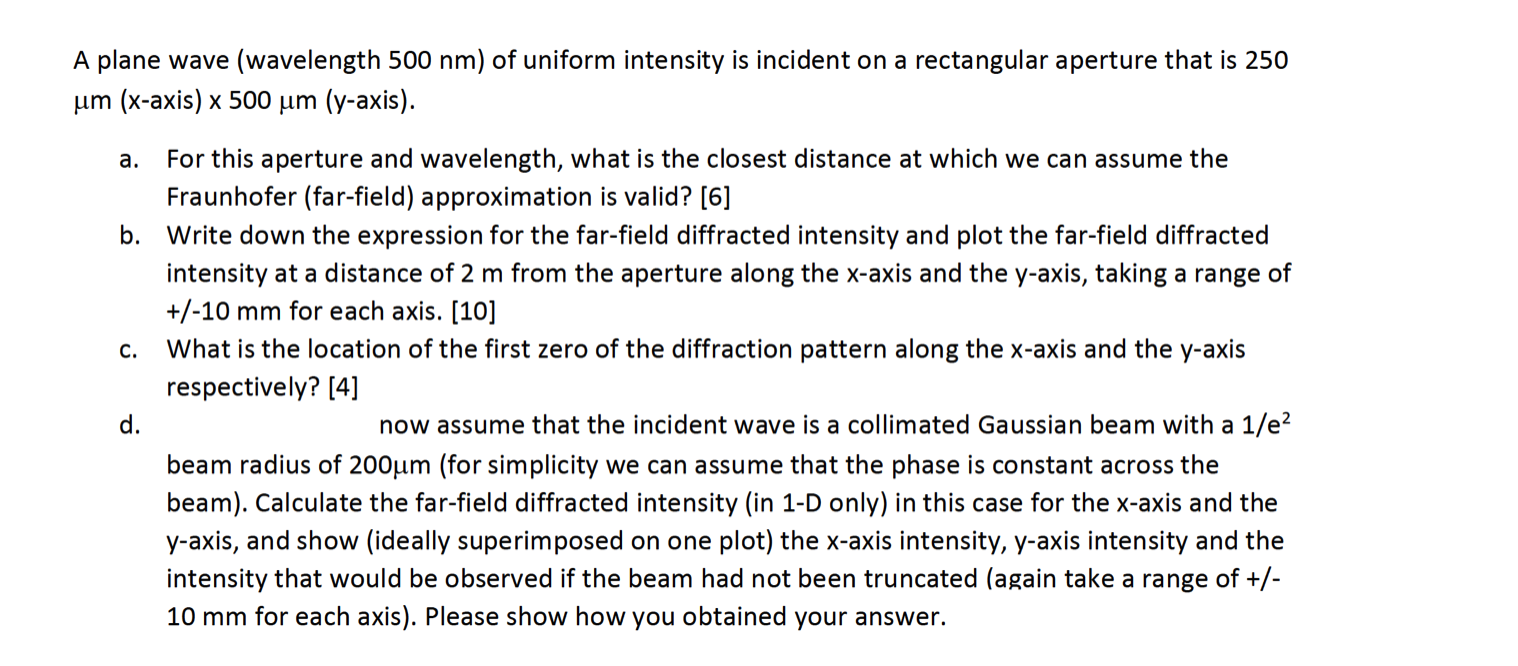
A plane wave (wavelength 500 nm) of uniform intensity is incident on a rectangular aperture that is 250 um (x-axis) x 500 um (y-axis). c. a. For this aperture and wavelength, what is the closest distance at which we can assume the Fraunhofer (far-field) approximation is valid? [6] b. Write down the expression for the far-field diffracted intensity and plot the far-field diffracted intensity at a distance of 2 m from the aperture along the x-axis and the y-axis, taking a range of +/-10 mm for each axis. [10] What is the location of the first zero of the diffraction pattern along the x-axis and the y-axis respectively? [4] d. now assume that the incident wave is a collimated Gaussian beam with a 1/e? beam radius of 200um (for simplicity we can assume that the phase is constant across the beam). Calculate the far-field diffracted intensity (in 1-D only) in this case for the x-axis and the y-axis, and show (ideally superimposed on one plot) the x-axis intensity, y-axis intensity and the intensity that would be observed if the beam had not been truncated (again take a range of +/- 10 mm for each axis). Please show how you obtained your answer. A plane wave (wavelength 500 nm) of uniform intensity is incident on a rectangular aperture that is 250 um (x-axis) x 500 um (y-axis). c. a. For this aperture and wavelength, what is the closest distance at which we can assume the Fraunhofer (far-field) approximation is valid? [6] b. Write down the expression for the far-field diffracted intensity and plot the far-field diffracted intensity at a distance of 2 m from the aperture along the x-axis and the y-axis, taking a range of +/-10 mm for each axis. [10] What is the location of the first zero of the diffraction pattern along the x-axis and the y-axis respectively? [4] d. now assume that the incident wave is a collimated Gaussian beam with a 1/e? beam radius of 200um (for simplicity we can assume that the phase is constant across the beam). Calculate the far-field diffracted intensity (in 1-D only) in this case for the x-axis and the y-axis, and show (ideally superimposed on one plot) the x-axis intensity, y-axis intensity and the intensity that would be observed if the beam had not been truncated (again take a range of +/- 10 mm for each axis). Please show how you obtained your







